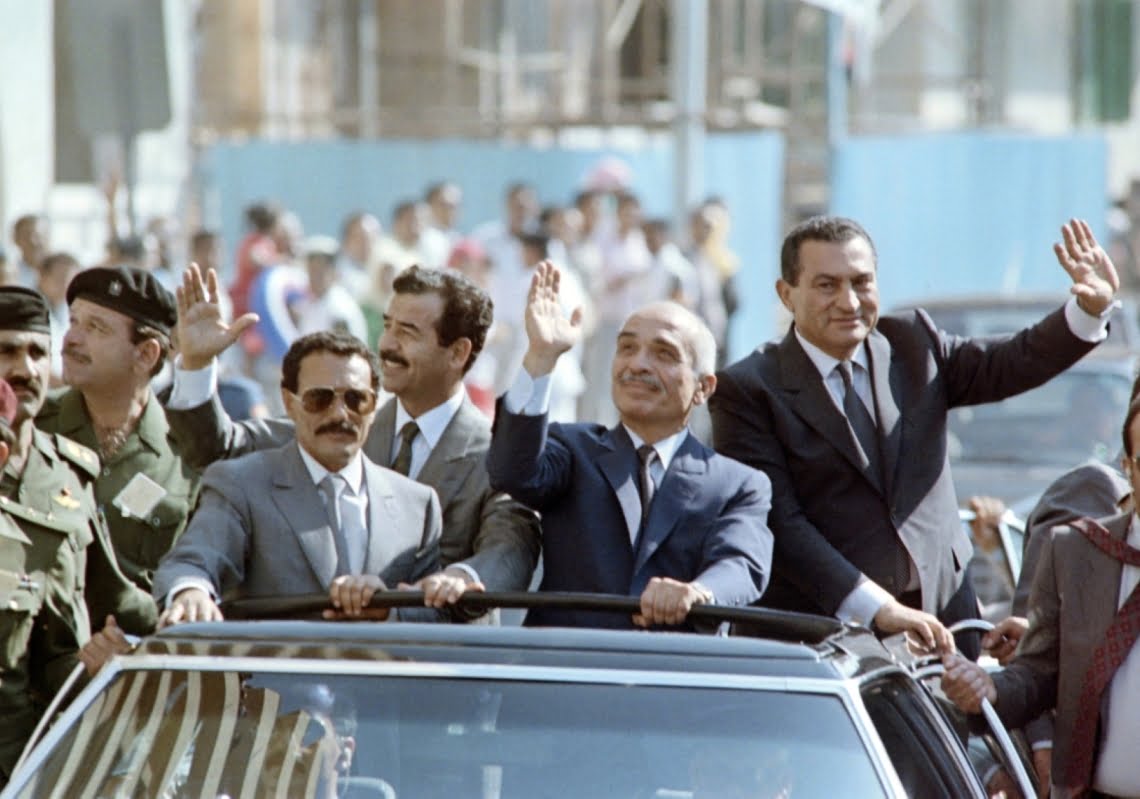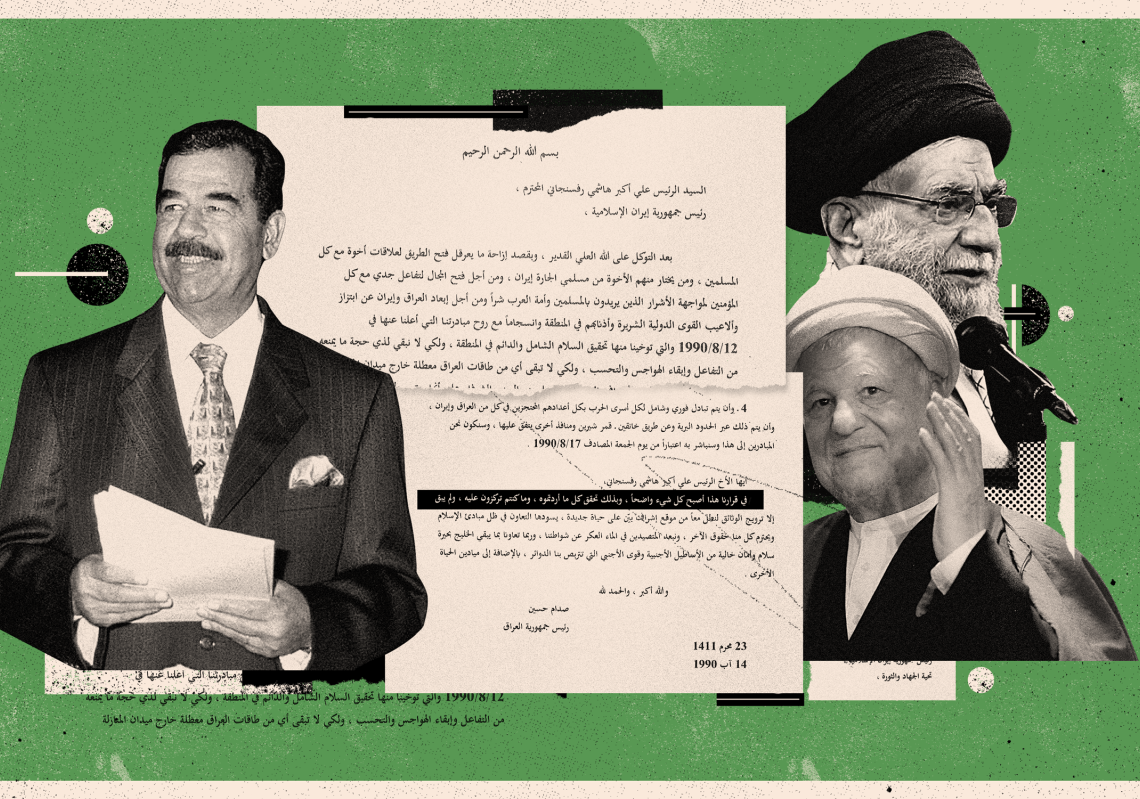In his book “The Syrian-Iranian Alliance and the Region,” the late former Vice President of Syria, Abdel Halim Khaddam, revealed the story of the formation of “Hezbollah” in Lebanon in 1982 and the incident in Fatah Allah neighborhood in the Beqaa Valley, Beirut, on February 24, 1987.
Before 1980, Iran had minimal influence or political and military presence in Lebanon. Its presence was symbolic and represented by a group of Iranian opposition members operating under the leadership of Imam Sayyed Musa al-Sadr. Among these figures was Sayyed Mustafa Chamran, who later became the Minister of Defense after the victory of the Islamic Revolution in Iran. Iran’s deeper involvement in Lebanon came during the Israeli invasion of Lebanese territories in early June 1982. The Iranian leadership decided to send a brigade from the Islamic Revolutionary Guard Corps to Syria and then to Lebanon (in the Beqaa Valley). Their mission was to form a military organization named “Hezbollah” (the Islamic Revolution in Lebanon). The groundwork for this had been laid through the strong interaction of the Shia community in Lebanon with the Islamic Revolution. Islamic support committees were formed in Iran, consisting of youth and scholars in some Shia regions, along with mosque committees in neighborhoods of the southern suburbs, and independent military groups that emerged as a fighting force occasionally aligned with “Amal Movement” or acting independently. Most of their conflicts were with the Iraqi Baath Party. These formations served as the nucleus that the Islamic Revolutionary Guard Corps used to shape a military faction, initially known as the “Islamic Resistance,” and later as “Hezbollah.”
Iran was careful to confine its mission to the military aspect and distance itself from political work. Instead, they focused on strengthening and expanding the resistance. Hezbollah grew, and its ranks swelled, overshadowing “Amal Movement,” whose leadership was deeply engaged in political work. With the support and backing of Iran, Hezbollah became a major competitor to “Amal Movement” within the Shia community. This led to intense fighting between the two, which only ceased after Syrian and Iranian pressure and a reconciliation between the two parties in the late 1980s.
Officially, Syria supported and endorsed Hezbollah, based on the alliance between Damascus and Tehran. President Hafez al-Assad perceived this alliance as strategically beneficial for Syria from two angles. Firstly, it created a balance between the two countries against their common rival, the late Iraqi President Saddam Hussein. Secondly, Iran became a support for Syria in confronting Israel. However, Syria’s position in practice was mostly in favor of “Amal Movement,” with President Hafez al-Assad being the only one showing sympathy for Hezbollah. He gave instructions to the military and security institutions based on the belief that Hezbollah had become the main resistance force after “Amal Movement” and other national parties (Communist, Labor, Nationalist, and Nasserite parties, etc.) declined in their roles. Thus, he believed that Hezbollah should be relied upon in resisting Israel and wearing it down in southern Lebanon. Most Syrian officers sympathized with “Amal Movement” and did not have a positive view of Hezbollah, considering it an Islamist party, as they were still under the impact of the bloody incidents that took place between the Syrian regime and the Muslim Brotherhood in Syria. At first, the relationship between the Syrian army and Hezbollah was not smooth, and the most dangerous test was the “Fatah Allah Massacre,” in which 22 Hezbollah members were killed on February 24, 1987. The incident was subject to different narratives, but former Vice President Abdel Halim Khaddam, naturally, adopted the version that supported the Syrian army and held Hezbollah responsible. According to this version, a Syrian force (part of the Syrian army’s plan to control security in Beirut, at the request of Lebanon) went to a Hezbollah barracks in Beirut, known as “Fatah Allah Barracks” (in the Basateh neighborhood). The force asked Hezbollah members to evacuate the premises and hand over their weapons. After a discussion for some time, the force was met with intense gunfire, leading to the death of some soldiers. In response, the force retaliated, resulting in the death of 22 people, and the Syrian force took control of the barracks. However, there was another narrative that circulated in the media at that time, suggesting that the incident was an act of revenge by one of the Syrian intelligence officers, named Jamil Jami’, against Hezbollah for insults he had received from the same group that occupied the mentioned barracks. This incident occurred in Abi Haydar Tower (Basateh), Mamoun Street, when this Syrian officer was a major among the Syrian observers who entered Beirut in 1985 following the “War of the Camps.”
However, the irony here is that “Hezbollah” managed to absorb the situation despite its severity, and it turned the page as desired by the Islamic Republic. The newspaper “Al-Safir” headlined on the front page the following day: “Hezbollah: We will not be dragged, our decision is for the rule of the jurist.” Nonetheless, there was a rebuke expressed by the Iranian leadership to the Syrian leadership through their ambassador in Damascus, Mohammad Hassan Akhtari. However, President Hafez al-Assad and his deputy handled Syria’s position and overlooked the matter, expressing Syria’s deep dissatisfaction with the statements made by some Iranian officials. Khaddam reiterated to Ambassador Akhtari the importance of the relationship between their two countries and urged Iranian officials not to compare “Hezbollah” with Syria. He pointed out that Iranian officials are aware of Syria’s positions towards the Islamic Republic. Khaddam concluded his statement with a question: “Is it possible that Hezbollah’s weight in Iran is greater than Syria’s weight? If that is the case, then the reality is painful, and we believe that the relationship with Iran is more important than a hundred organizations. We consider the relationship with Iran to be built on a shared vision of our joint tasks against imperialism and Zionism.”
At that time, Syria did not fully grasp the significance and position of “Hezbollah” towards Iran. It viewed Hezbollah as a military organization affiliated with Iran and nothing more. “The Syrian President was not concerned about Iranian influence, nor did he envision that Iran would establish military and political bases in Lebanon to serve its strategy. He did not think that Iran had ambitions for regional expansion, as it was an ally we cooperated with in confronting the Iraqi regime,” as stated by Abdel Halim Khaddam in his book. Perhaps even Iran itself did not anticipate that “Hezbollah” would evolve into the regional party it is today, playing a role in preventing Syria from falling.


